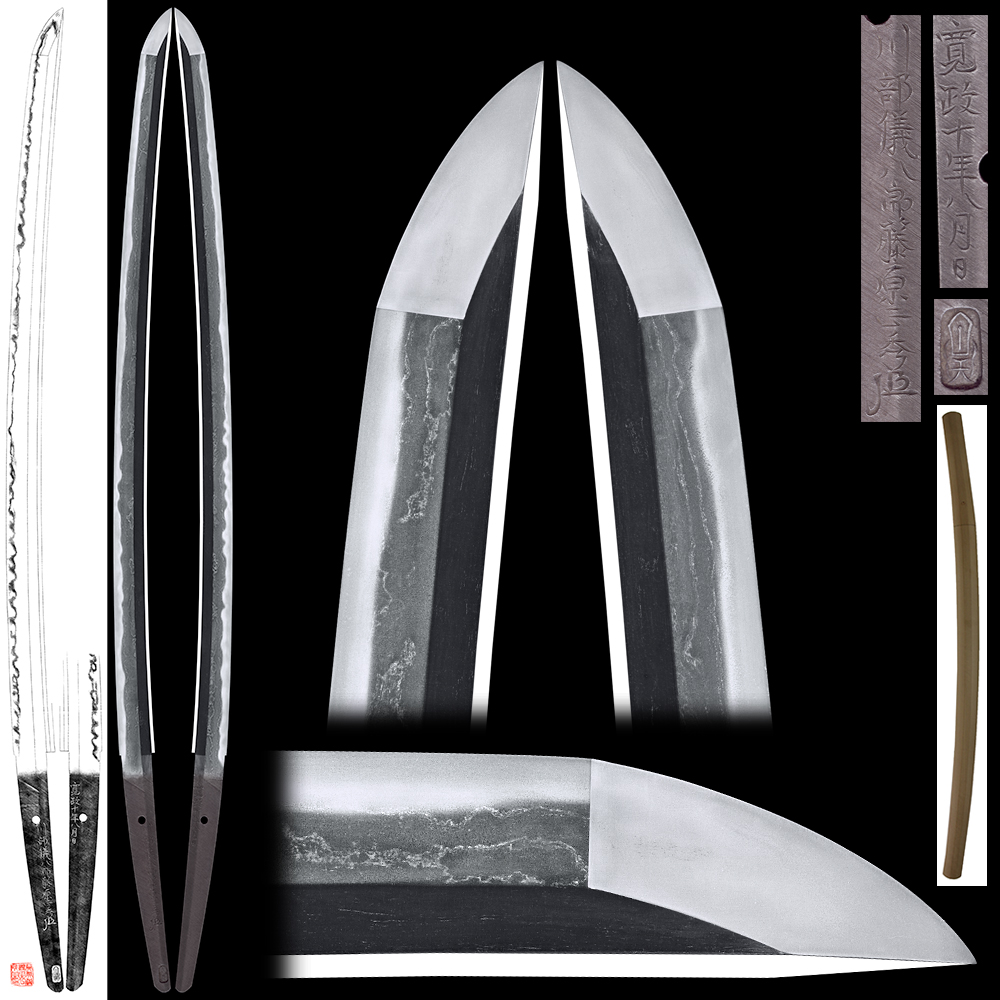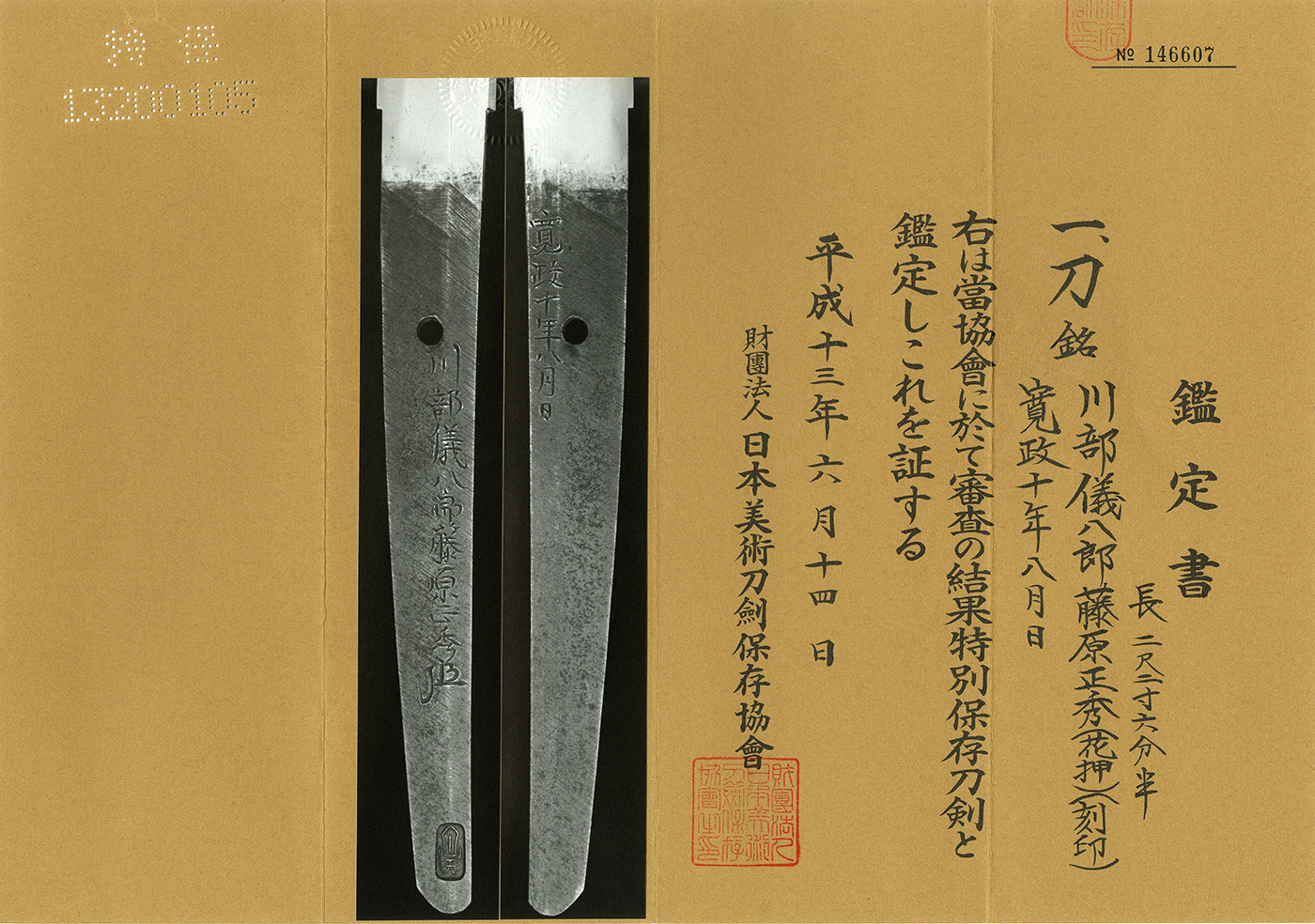Katana: Kawabe Gihachiro Fujiwara Masahide Kao
2017/01/28
Katana in Shirasaya (NBTHK Tokubetsu Hozon paper)
Signature : Kawabe Gihachiro Fujiwara Masahide (Kao)
Kansei 10 Nen Hachigatsu hi (1798)
Shinshinto : Saijo saku ranking: Musashi province.
(We divide 4 sections for each sword as Saijo saku, Jojo saku, Jo saku and regular saku)
This sword Masahide belongs to Jojo saku ranking.
The blade is polished by high ranking polisher.
Habaki : Gold foiled single Habaki.
Blade length : 68.8 cm or 27.1 inches.
Sori :1.5 cm or 0.59 inches.
Mekugi : 1
Width at the hamachi : 3.26 cm or 1.28 inches.
Width at the Kissaki : 2.44 cm or 0.96 inches.
Kasane : 0.73 cm or 0.29 inches.
Era : Late Edo period.(1798)
Shape : The blade is wide and thick with suitable curve and long Kissaki nice looking shape.
Jigane : Itame-hada and Ooitame-hada mixed with Jinie attach and texture can be seen very well. Uturi and Tobiyaki appear on the surface.
Shinogi ji : Ooitame-hada and Masame-hada mixed.
Hamon : Koniedeki with deep Nioikuch Gunome-midare Hamon with Sunagashi. Boshi turns back Togariba style.
Special feature : Kawabe Gihachiro Fujiwara Masahide has born at A.D.1750 as ‘Suzuki Sanjiro’ and at 1774, he started to work as swordsmith of Akiyama Daimyo clan. At first, he engraved his signature as ‘Suishinshi’.
Though he retired from Akiyama clan to become a student of Tsunahiro at 1789.
He changed his signature to ‘Masahide’ around 1818. He’ve also used several different names sometime.
First of all he tried to copy a style of the Tsuda Sukehiro or Inoue Shinkai which were high demanded from the market.
But He found out that these vivid style will make the blade vulnerable.
So He challenged to revive old tough Koto blades such like Kamakura period to Nanbokucyo period. His style changed to very simple Suguha Hamon with small Ashi working.
Most of the people want to buy gorgeous active sword like Doranba Sukehiro or Shinkai. But most of his blades became more conservative.
He returned back to Akimoto family again and passed away at age 76.
He is quite well known for teaching many famous students like Taikei Naotane, Hosokawa Masayoshi and Cyounsai Tsunatoshi and so on.
This blade looks like Nanbokucyo period Sekisyu Naotsuna.
The blade is Ooitame-Hada with active deep Nioikuch Gunome-midare Hamon.
This blade is published on 'Shinshinto-Taikan'(Page #418).




